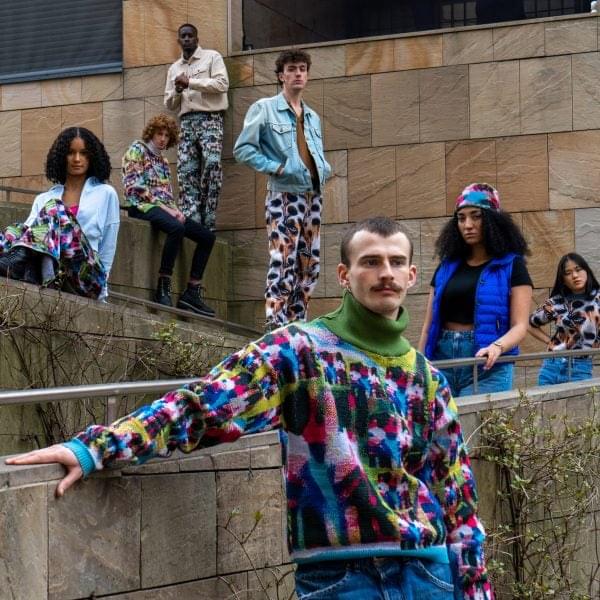Experts warned that AI’s autonomy is just a “veneer,” and that it’s being used as surveillance through the scraped data it needs to train on.




A team of chemists and material scientists at the University of Tokyo has developed a new class of interlocking supramolecular systems by combining metal-organic frameworks with rotaxanes. In their study, reported in the journal Nature Communications, the group combined the two structures and found possible uses for the results.
Metal-organic frameworks (MOFs) are compounds made using metal ions in such a way as to create one-, two-, or three-dimensional structures. The resultant ligands are known in the chemistry world as linkers or struts. They are typically used to make products such as sensing equipment, machines that store energy or those that separate and purify liquids. They have also been used for biological imaging and drug delivery.
Rotaxanes are molecular structures that are interlocked in dumbbell shapes. They are created by threading cyclic molecules into other molecules and then applying end caps. They are typically used as molecular switches in electronics devices, and sometimes as shuttles. In this new effort, the research team developed a way to connect the two types of compounds to create new kinds of interlocking structures.
Prepare to have your mind blown by Elon Musk’s latest creation: TruthGPT! In this ground-breaking video, we delve into the mind-boggling potential of an AI-powered language model, which has sent shockwaves throughout the AI industry.
TruthGPT is Elon Musk’s idea, a highly advanced and groundbreaking language model that aspires to push the veracity and accuracy of AI-generated material to the forefront. It is intended to address the misinformation, fake news, and biassed narratives that afflict our digital environment. Musk’s goal with TruthGPT is to construct an AI that can present information objectively, factually, and without personal prejudice.
TruthGPT has sent shockwaves through the AI sector with its unmatched capabilities. It has astounded industry experts, researchers, and even competitors. This YouTube video analyses the AI community’s emotions and responses, demonstrating the disbelief and excitement sparked by Elon Musk’s latest creation.
You may be asking, as a ChatGPT user, if TruthGPT is a direct rival to this popular language paradigm. While both models aim to generate human-like prose, their approaches differ. ChatGPT is intended to engage in interactive conversations by giving a variety of responses and information depending on its training data. TruthGPT, on the other hand, places a strong emphasis on assuring accuracy, fact-checking, and unbiased information distribution.
TruthGPT’s implications are enormous and far-reaching. It has enormous potential to change how we consume and engage with AI-generated information. This YouTube video investigates the potential influence of TruthGPT on news organisations, social media platforms, research institutions, and society in general.
Join us as we investigate Elon Musk’s INSANE new brainchild, TruthGPT, and see the incredible discoveries that are altering the AI field. Prepare to be astounded by the ramifications and possibilities of this game-changing technology!
A new method for training robots could help streamline the ways researchers teach robots to perform simple tasks.

Attackers are increasingly targeting vulnerable developer laptops to infiltrate production systems without directly attacking them, warned cloud security expert Lee Atchison.
Instead of waiting for an application to become fully functional, hackers target the development process used to bring an application to a state of operation, Atchison said, speaking at a recent Uptycs-sponsored Cybersecurity Standup, “Castles in the Sky – Secure Your App Dev Pipeline From Laptop to Cloud.”
“We focus so much attention on keeping data and cloud data centers secure. But we haven’t realized that all of this technology feeds into the data centers and that one of the primary drivers of that is developers, the source code they develop, and the machines that they develop the source code on,” Atchison said. “Those DevOps machines feed into the production systems but have nowhere near the level of protection behind them that the production data centers do.”
Summary: As artificial intelligence (AI) evolves, its intersection with neuroscience stirs both anticipation and apprehension. Fears related to AI – loss of control, privacy, and human value – stem from our neural responses to unfamiliar and potentially threatening situations.
We explore how neuroscience helps us understand these fears and suggests ways to address them responsibly. This involves dispelling misconceptions about AI consciousness, establishing ethical frameworks for data privacy, and promoting AI as a collaborator rather than a competitor.

Today we’re talking to Christopher Williamson, Global Director Of Technology at TUI. We discuss Chris’s methodology of going from idea to project, the ways in which AI is being utilized to further TUI’s technology, and the ways that Joel and Chris approach technology for their kids and the next generation.

Italian fashion start-up Cap_able has launched a collection of knitted clothing that protects the wearer’s biometric data without the need to cover their face.
Named Manifesto Collection, the clothing features various patterns developed by artificial intelligence (AI) algorithms to shield the wearer’s facial identity and instead identify them as animals.
Cap_able designed the clothing with patterns – known as adversarial patches – to deceive facial recognition software in real-time.

Architecture studio Snøhetta has released photos showing how its underwater restaurant, Under, has become covered in marine life since reaching completion in Norway three years ago.
Located in the remote Lindesnes area, the 495-square-metre structure is submerged off of a craggy shoreline and now doubles as an artificial reef.
The Norwegian studio designed Under as a concrete tube that is intended to resemble a sunken periscope. The concrete was left exposed externally, forming a rough finish onto which algae and molluscs can latch.